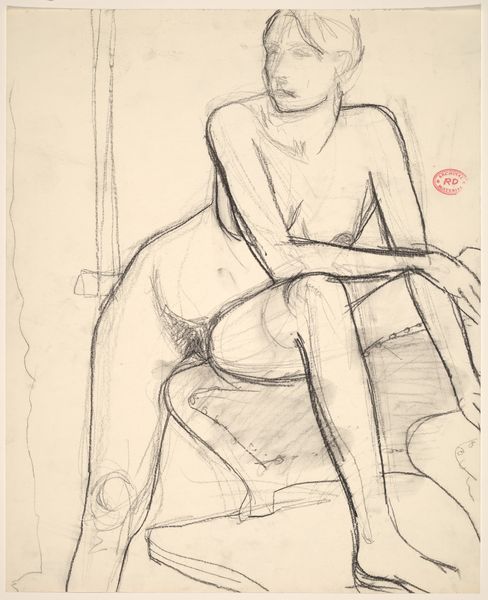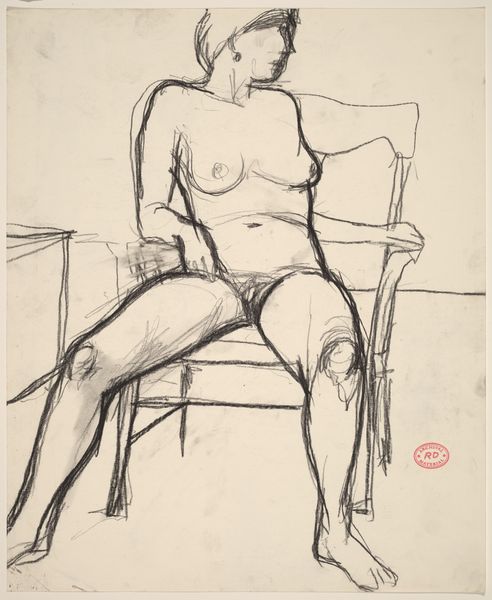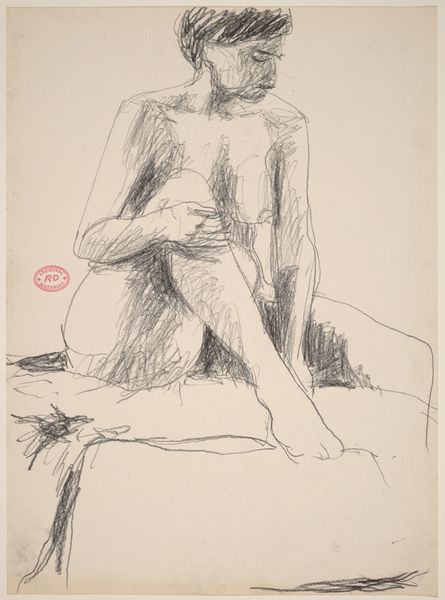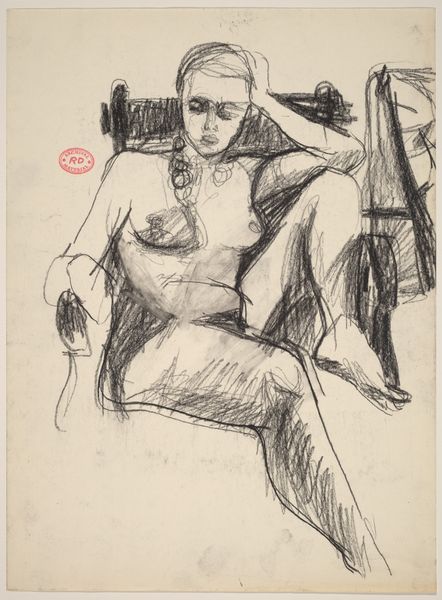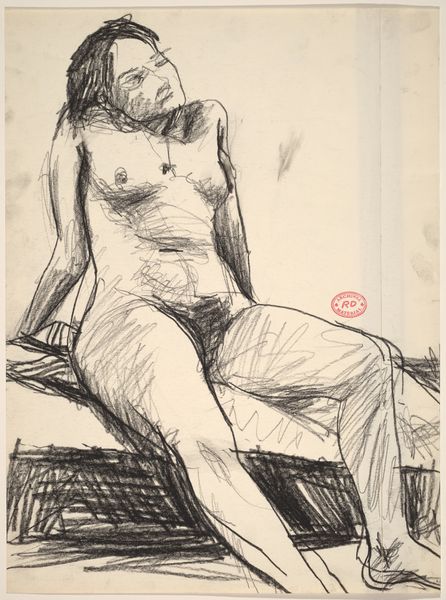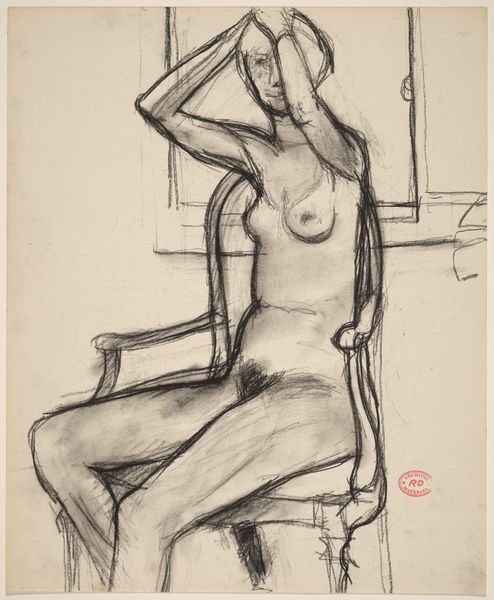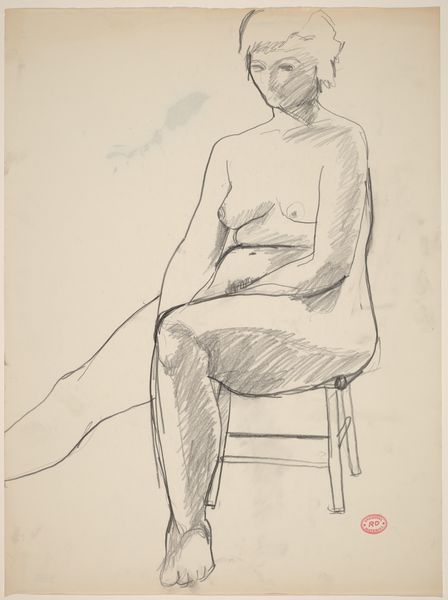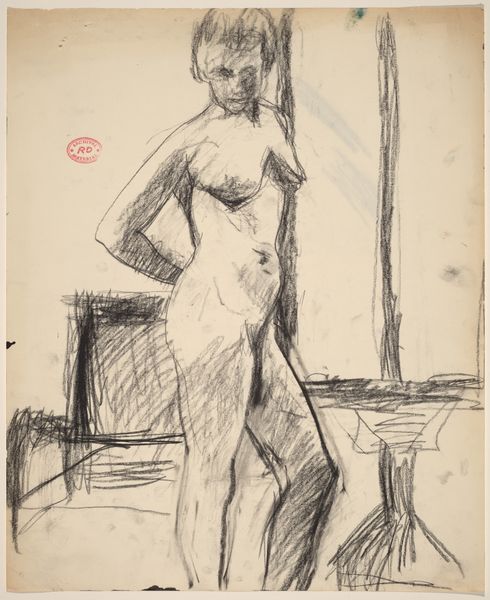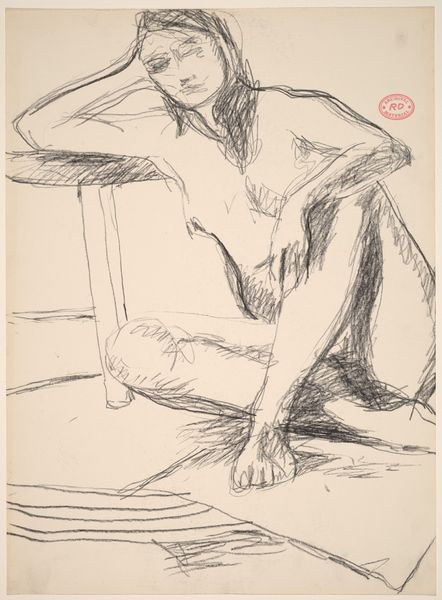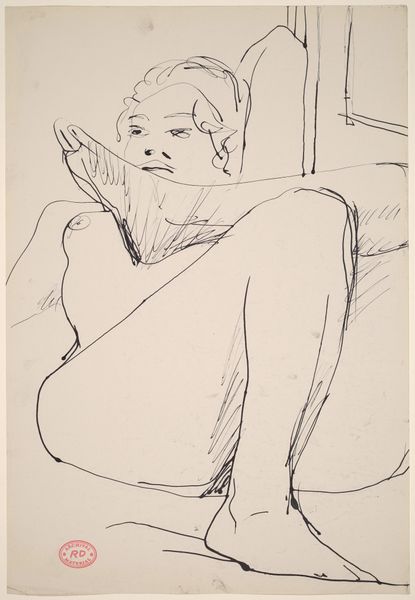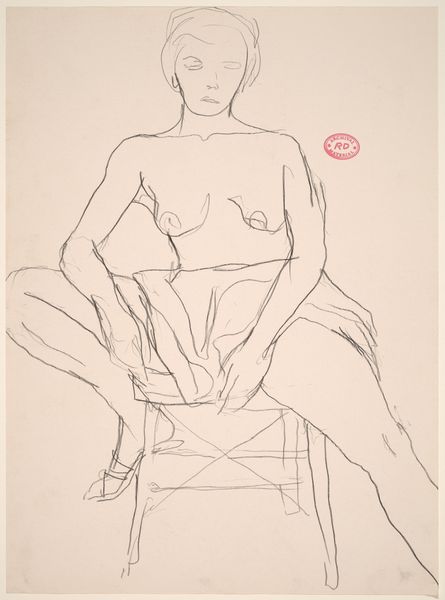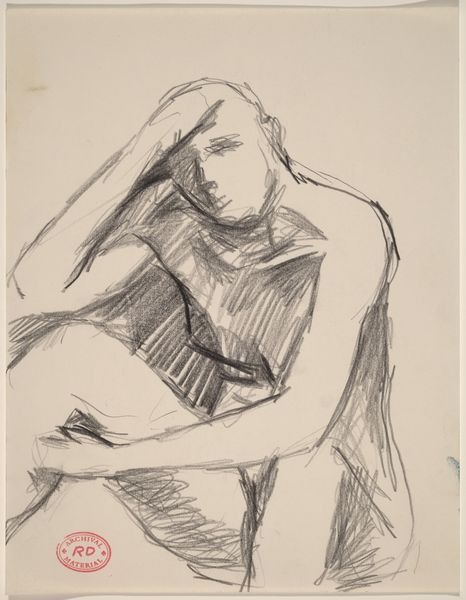![Untitled [seated female nude with left leg on chair arm] by Richard Diebenkorn](/_next/image?url=https%3A%2F%2Fd2w8kbdekdi1gv.cloudfront.net%2FeyJidWNrZXQiOiAiYXJ0ZXJhLWltYWdlcy1idWNrZXQiLCAia2V5IjogImFydHdvcmtzL2ZhNDY0MjcyLTU0MjMtNGJjNi1hZDAwLTBhYWYyN2M4ZDI1MC9mYTQ2NDI3Mi01NDIzLTRiYzYtYWQwMC0wYWFmMjdjOGQyNTBfZnVsbC5qcGciLCAiZWRpdHMiOiB7InJlc2l6ZSI6IHsid2lkdGgiOiAxOTIwLCAiaGVpZ2h0IjogMTkyMCwgImZpdCI6ICJpbnNpZGUifX19&w=3840&q=75)
Untitled [seated female nude with left leg on chair arm] 1955 - 1967
0:00
0:00
drawing, impasto, pencil
#
drawing
#
figuration
#
impasto
#
bay-area-figurative-movement
#
pencil drawing
#
pencil
#
nude
#
realism
Dimensions: overall: 43.2 x 35.6 cm (17 x 14 in.)
Copyright: National Gallery of Art: CC0 1.0
Curator: Richard Diebenkorn’s pencil drawing, "Untitled [seated female nude with left leg on chair arm]," was created sometime between 1955 and 1967. Editor: There’s a subdued, almost weary quality to this nude figure, isn't there? The composition, particularly the figure's posture and the chair’s stark lines, conveys a sense of introspection. Curator: Indeed. Diebenkorn's employment of line is remarkable; see how the density varies to suggest both form and shadow? The stark contrast provides not only volume but also dictates the compositional rhythm, compelling our attention across the figure's form. Editor: And consider the visible marks and smudges. They highlight the process of creation, the physical act of the artist wrestling with the materiality of pencil on paper. It speaks to the labor involved, a negotiation between artist, model, and medium. The paper itself doesn't seem pristine—it bears witness. Curator: Precisely! Note the strategically employed realism balanced with a somewhat abstract rendering, especially in the face and the definition of space. The figure exists not realistically, but as a consequence of formal relations: the pressure of lines creating an object from the plane. Editor: One could argue it reflects a moment of shifting attitudes towards the female nude, less idealized and more focused on the human, imperfect form. Was it made as a study or a finished work? Was this figure fully rendered to stand apart from historical representations? Curator: That is unclear. But from a formal perspective, what makes it stand out is its synthesis—a careful orchestration of balance, tension, and a play between the explicit and implicit elements of line. Editor: I’m struck by how this examination of materiality and process forces us to confront the inherent physicality and often overlooked labor of making art, an integral component that binds creator, subject, and, finally, us, the observers. Curator: Well, I appreciate how your reading brings the human condition—the labor and social framework surrounding art—into sharper focus. Editor: And you highlight how even within apparent simplicity, structural complexities deeply impact our experience.
Comments
No comments
Be the first to comment and join the conversation on the ultimate creative platform.
